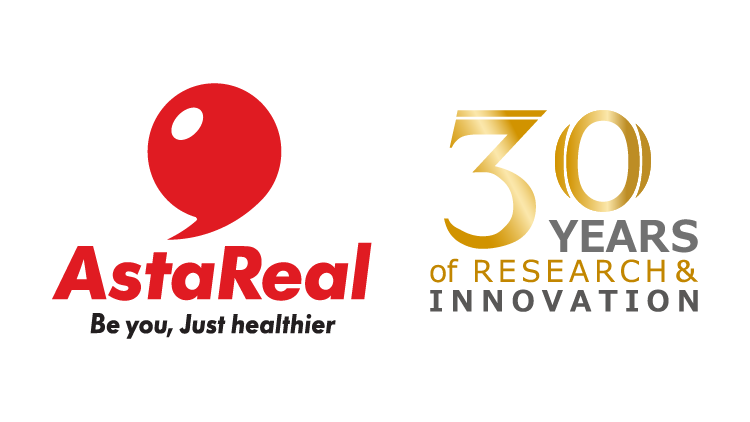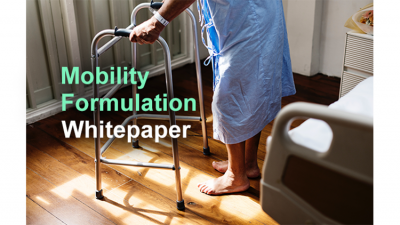Promotional Features
Sarcopenia: Why collaboration is key to tackling the rising cause of senior immobility
Age-related loss of muscle mass poses a major, growing problem for individuals and countries. The condition, known as sarcopenia, is linked to health problems that reduce quality of life and are costly to manage, placing burdens on individuals and healthcare payers alike. However, while the situation is bad and getting worse, the rise of sarcopenia also presents an opportunity for public health bodies, medical professionals and the nutraceutical industry to work together to make a real difference.
Sarcopenia is characterized by loss of skeletal muscle mass and function. Muscle mass and strength fall steadily throughout most of adulthood and typically decline to the point that problems start to happen after 60 years of age.1 The condition is associated with disability, poor quality of life and increased risk of death.2
The management of sarcopenia and the problems it causes are expensive for healthcare systems. As far back as 2000, healthcare spending directly related to sarcopenia was estimated to cost the US healthcare system $18.5bn.3 That amounted to 1.5% of all US healthcare spending in 2000. Applied to healthcare spending in South-East Asia, the US data suggests sarcopenia cost Indonesia, Malaysia, Philippines, Singapore, Thailand and Vietnam $6.3bn in direct healthcare costs in 2017.4
There are good reasons to think actual spending on sarcopenia may be higher. One reason stems from demographic changes. In 2000, 6.1% of people in South-East Asia were aged 65 years or older. 5 By 2019, the figure had risen to 8.7% and was forecast to near 20% by 2050.
That overall data masks higher forecasts in some nations, such as the 35% and 40% of people in Thailand and Singapore that are predicted to be aged over 60 by 2050.6 If, as research suggests, 10% of people aged over 60 have sarcopenia, the forecast implies 2.3m people in Thailand alone will have the condition by 2050.2
The other reason to think the rate of sarcopenia-related healthcare spending may exceed 1.5% stems from changes in our understanding of the effects of muscle loss. In 2000, sarcopenia was primarily seen as a condition that affected mobility. Today, evidence of the effects that myokines, chemical signals released by muscles, have on systems and organs throughout the body suggests sarcopenia may have a role in a range of age-related conditions, including cardiovascular disease and dementia.7
Existing efforts to tackle sarcopenia
Some countries and health organizations have responded to the harm sarcopenia is causing citizens and the amount it is costing healthcare services by running campaigns designed to tackle the issue. In 2007, the Japanese Orthopedic Association began a campaign to educate people about locomotive syndrome, a term it coined to describe reductions in mobility tied to conditions such as sarcopenia.
The Japanese Ministry of Health, Labour and Welfare joined the campaign in 2012, vowing to raise awareness of locomotive syndrome from 17.3% to 80% within 10 years.8 As of 2018, awareness was up to 48.1%.
Government officials in Singapore are also working to address sarcopenia as part of a healthy aging initiative that began in 2015.9 The initiation of the program followed shortly after Singapore signed off on a five-fold increase in the size of its Seniors’ Mobility and Enabling fund.
These initiatives have made some progress but sarcopenia and the broader issues of senior mobility and independence remain unresolved.10 One problem is that the public health campaigns are yet to drive the sort of cultural change needed to get a society to collectively tackle the condition. Dr Robert Corish, an preventative medicine expert, thinks many stakeholders have a role to play in this process.
“Physicians need to be aware of muscle health and they need to start prescribing exercise. Dieticians need to understand the role of proteins, so as to preserve muscular strength and muscular size, and the importance of how much protein we take in per day. Physical therapists, who are mainly involved in therapy to help people overcome musculoskeletal deficiencies, also need to step up and alter their practice to help people preserve muscle mass and strength,” Corish said.
The fact that these changes are yet to happen on a large scale is partly a consequence of limited awareness of sarcopenia, even among physicians. The World Health Organization only recognized sarcopenia as a disease in 2016.11
Raising awareness and driving cultural change will inevitably take some time but the demographic trends mean these processes need to go faster to prevent significant suffering and economic costs. That will require an expanded, more collaborative attempt to tackle sarcopenia. Governments and public health bodies cannot tackle the challenge alone. Industry will need to play a role.
The role of industry
The food and nutrition industry’s success in raising awareness of probiotics and their role in gut health offers a roadmap for how it can help tackle sarcopenia. By researching gut health and communicating the findings, the industry brought the subject to the attention of consumers and physicians, leading to increased recognition of the importance of a balanced microflora and how to achieve it. Applied to sarcopenia, this approach can enable the industry to support education and awareness initiatives.
Manufacturers also have an important role to play in providing consumers and physicians with the tools they need to address sarcopenia. Research suggests aerobic, resistance and combined exercise training programs have preventive and therapeutic effects in sarcopenia patients but the body can only grow muscle fibers if it has the required building blocks.12
That is where food and nutrition manufacturers come in. The literature on senior nutrition shows a range of ingredients are involved in muscle development. Protein plays a central role, either in the form of foods or nutritional products containing leucine and other branched-chain amino acids.13 The creation of palatable, efficacious and bioavailable ways to provide such amino acids, be it through a drink or a tablet, is one way the industry can contribute to tackling sarcopenia.
Such products are needed to deliver the increased quantity of protein people aged over 65 years old must consume to stay healthy. This population needs to consume protein throughout the day to get the building blocks they need to optimise muscle synthesis and better prevent sarcopenia.
Protein is just one piece of the puzzle, though. Other studies show sarcopenia is also associated with low levels of vitamin D, which is involved in muscle fiber synthesis.14 That evidence shows sarcopenia presents manufacturers with another way to market vitamin D, either alone or in combination with calcium in products targeting both muscle loss and osteoporosis.
Finally, there is evidence that antioxidants have a major role to play.15 Perhaps the strongest evidence comes from a trial that randomized elderly subjects to take placebo or an astaxanthin formulation for four months.16 Participants exercised three times a week for three months. By the end of the trial, the strength of participants who took the astaxanthin formulation had increased by 14.4%, compared to 2.9% in the placebo group. The result is likely tied to astaxanthin’s protection of mitochondria.
Derrick Ong, an accredited dietitian who founded the Eat Right Nutrition Consultancy, thinks the generation and dissemination of such evidence of clinical effectiveness is central to tackling sarcopenia.
“It’s vitally important that ingredients and formulations are clinically proven. The industry must show products achieve clinically meaningful outcomes to drive the changes needed to tackle sarcopenia,” Ong said.
Developing 360-degree sarcopenia solutions
The literature on the effects of macro and micronutrients on sarcopenia point to two conclusions. Firstly, there is good evidence on what nutritional strategies work in sarcopenia. Secondly, regimens that combine multiple elements such as amino acids, vitamin D and antioxidants are likely to yield the best results.
By combining multiple clinically proven ingredients into nutritionally dense products, manufacturers can support active aging by addressing the root causes of sarcopenia. AstaReal, which provided the astaxanthin used in the aforementioned antioxidant study, is driving development of such products by offering 360-degree value-added solutions with its established collaborative ecosystem.
AstaReal’s efforts in Singapore have manifested in a ready-to-drink functional beverage that combines astaxanthin with soy protein and leucine to deliver the range of nutrients needed to help sarcopenia patients. Through such products, AstaReal is leading the food and nutrition industry’s key contribution to the collaborative task of tackling sarcopenia.
References
1. Cruz-Jentoft, A. J. & Sayer, A. A. Sarcopenia. Lancet 393, 2636–2646 (2019).
2. Shafiee, G. et al. Prevalence of sarcopenia in the world: a systematic review and meta- analysis of general population studies. J. Diabetes Metab. Disord. 16, 21 (2017).
3. Janssen, I., Shepard, D. S., Katzmarzyk, P. T. & Roubenoff, R. The healthcare costs of sarcopenia in the United States. J. Am. Geriatr. Soc. 52, 80–85 (2004).
4. The cost of healthcare is rising in ASEAN. How can nations get the most for their money? World Economic Forum Available at: https://www.weforum.org/agenda/2018/08/cost-healthcare-rising-asean-nations-money/. (Accessed: 29th October 2019)
5. No to ageism, yes to intergenerational equality | United Nations ESCAP. Available at: https://www.unescap.org/blog/no-ageism-yes-intergenerational-equality. (Accessed: 29th October 2019)
6. World Population Ageing. Available at: https://www.un.org/en/development/desa/population/publications/pdf/ageing/WPA2017_Highlights.pdf. (Accessed: 29th October 2019)
7. Brandt, C. & Pedersen, B. K. The role of exercise-induced myokines in muscle homeostasis and the defense against chronic diseases. J. Biomed. Biotechnol. 2010, 520258 (2010).
8. Ishibashi, H. Locomotive syndrome in Japan. Osteoporos Sarcopenia 4, 86–94 (2018).
9. ACTION PLAN FOR SUCCESSFUL AGEING. Available at: https://sustainabledevelopment.un.org/content/documents/1525Action_Plan_for_Successful_Aging.pdf. (Accessed: 29th October 2019)
10. What We Have Achieved So Far. Available at: https://www.csc.gov.sg/images/default-source/ethos-images/ethos-issue-19-(july-issue)/apo_infographic_working_2_1page_3_edit-01.jpg. (Accessed: 29th October 2019)
11. Anker, S. D., Morley, J. E. & von Haehling, S. Welcome to the ICD-10 code for sarcopenia. J. Cachexia Sarcopenia Muscle 7, 512–514 (2016).
12. Yoo, S.-Z. et al. Role of exercise in age-related sarcopenia. J Exerc Rehabil 14, 551–558 (2018).
13. Hanach, N. I., McCullough, F. & Avery, A. The Impact of Dairy Protein Intake on Muscle Mass, Muscle Strength, and Physical Performance in Middle-Aged to Older Adults with or without Existing Sarcopenia: A Systematic Review and Meta-Analysis. Adv. Nutr. 10, 59–69 (2019).
14. Skaaby, T., Thuesen, B. H. & Linneberg, A. Vitamin D, Sarcopenia and Aging. in 50, 177–188 (2017).
15. Brioche, T. & Lemoine-Morel, S. Oxidative Stress, Sarcopenia, Antioxidant Strategies and Exercise: Molecular Aspects. Curr. Pharm. Des. 22, 2664–2678 (2016).
16. Liu, S. Z. et al. Building strength, endurance, and mobility using an astaxanthin formulation with functional training in elderly. J. Cachexia Sarcopenia Muscle 9, 826–833 (2018).



